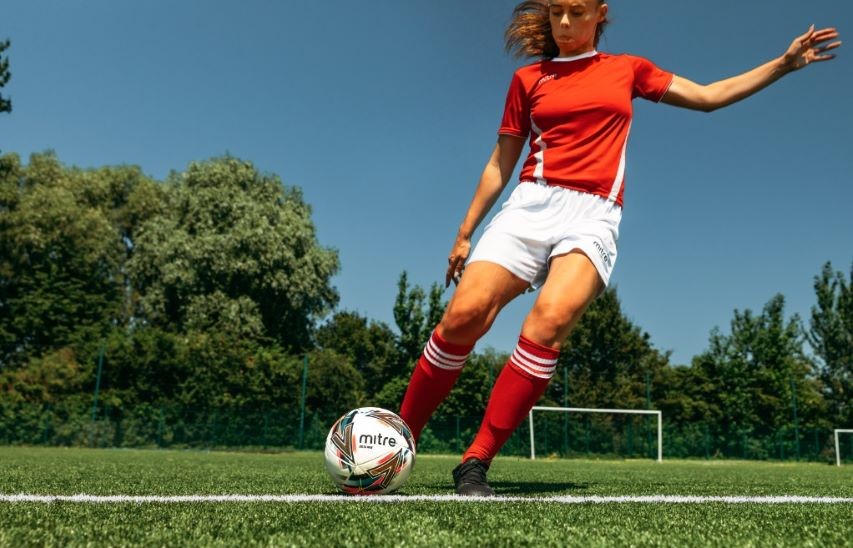Free Kick Training: Vital Drills for Grassroots Football Clubs

There’s very little room for error when you’re stepping up to take a free kick. Whether you’re a professional or playing grassroots football in your local park, practice and repetition will give you an advantage when the responsibility lies with you.
From the legendary free-kick goals that have made history to the intricate strategies and techniques behind each shot, free kicks embody both the art and science of football.
If you have the right football equipment and free kick drills at your disposal, it shouldn’t be too long before you drastically increase your success rate.
Free kick mannequins are an essential training tool in football, designed to simulate the defensive wall that players face during set-piece situations. Made from durable materials, these mannequins stand tall on the pitch, providing an obstacle for players to navigate their shots around.
Using Free Kick Mannequins
Set up the mannequins in a line, mimicking the formation of a defensive wall. Depending on the training objective, the distance between each mannequin and the wall's width can be adjusted.
Practice bending, lofting, or driving the ball around or over the mannequins to mimic real-match situations. This will help you become accustomed to hitting the target when a defensive wall stands in your way.
- Mannequins allow players to perfect their shooting technique, ensuring the ball dips or curves at the right moments.
- Use mannequins to practice different free kick routines, involving lay-offs, short passes, or dummy runs.
- To give yourself a lot of training options, consider buying a row of football mannequins, as well as individual ones to mimic other defensive players during free kick situations.
Free Kick Drills for Grassroots Footballer Players
These three tried-and-tested free kick drills can form the basis of your approach in training. Add variations wherever possible, and adapt them to as many scenarios as possible.
Wall Defence
The Wall Defence drill is designed to help players improve their free-kick accuracy, particularly when faced with a defensive wall.
Setup
Choose a spot on the field that represents a common free-kick position, preferably outside the penalty box.
Align the football mannequins (training dummies) and/or teammates in a straight line, roughly 10 yards from the ball.
Execution
The player taking the free-kick should stand a few steps behind the ball, ensuring a clear view of both the wall and the target (goal).
The aim is to either curve the ball around the sides of the wall or float it over the top. Players should focus on their standing foot placement, approach angle, and the part of the foot making contact with the ball.
Initially, focus on getting the ball over the wall, then refine the shot to target the top corners of the goal. This challenges the goalkeeper and increases the chances of scoring.
As your proficiency increases, adjust the wall's distance to increase the difficulty level. You can also experiment with different ball techniques such as inside or outside foot curves.
Adaptations
After each shot, players should assess their performance, considering ball trajectory, power, and accuracy. Coaches or teammates can offer constructive feedback to help refine your technique.
Variations
Keep experimenting with slightly different setups. For advanced training, introduce a goalkeeper to add an extra layer of challenge or increase the wall's size to further obstruct the view of the goal.
Defensive Pressure
The Pressure Situations drill aims to replicate the tension and urgency of a real match environment, challenging players to execute precise free kicks while facing potential defensive disruptions.
Setup
Choose a strategic point on the field, often just outside the penalty box, to represent a typical free-kick scenario.
The player preparing for the free kick should stand at their chosen location with the ball. Meanwhile, the teammate positions themselves a few meters away, ready to charge towards the taker.
Execution
On a given cue, such as a whistle or shout, the teammate begins rushing towards the taker. This mimics the real-game scenario where opposing players may shout or make movements to distract the kicker.
With the oncoming defender approaching, the player aims to shoot with accuracy, power and spin if necessary. This tests their ability to make snap judgments about shot selection and ball contact.
The success of the drill is not just in scoring but in the player's ability to handle pressure, make quick decisions and execute a well-placed shot.
Adaptations
Review the outcomes after several attempts. Analyze shot accuracy, player composure, and reaction times. Adjustments can be made by changing the distance of the rusher or introducing multiple rushers.
Variations
To further increase the challenge, try the following:
- Introduce a goalkeeper to try and save the free kick.
- Add more "defenders" rushing from different angles to create additional distractions.
- Set up obstacles or barriers that the player has to shoot around or over.
Obstacle Course
This free-kick drill is perfect for short free kicks and lay-offs. You can use it to create rehearsed routines to catch the opposition off guard.
Setup
Choose a starting point about 30 yards (27.43 meters) away from the goal. Place multiple football cones in various patterns leading up to the goal. This could be in a zigzag pattern, a series of gates to dribble through or a combination of both. Ensure the last obstacle is around 10 yards (9.14 meters) from the goal to allow space for the shot.
Execution
The player starts by dribbling the ball towards the first obstacle. As they approach each obstacle, they should manoeuvre the ball around it, simulating dodging defenders.
The player must maintain close ball control, ensuring the ball doesn't stray too far from their feet.
Once past the final obstacle, the player sets themselves up for a shot on goal. This could be a direct shot or a more controlled placement shot.
Players can alternate between their left and right feet for dribbling and shooting to improve their “two-footedness”.
Variations
- Introduce a time challenge where players have to complete the course and take a shot within a specific time frame.
- Increase or decrease the number of obstacles based on the player's skill level.
- Incorporate dynamic obstacles (other players) that move and try to block the player from advancing.
Tips
- Encourage players to keep their heads up while dribbling to better assess the situation and adjust their path accordingly.
- Practising at different speeds can help improve both control at higher speeds and decision-making under pressure.
Practice Makes Perfect
The more you practice these drills, the more your technique will improve. And because all you need is a football, a goal and some mannequins, you can even fine-tune your free kick skills on your own.

